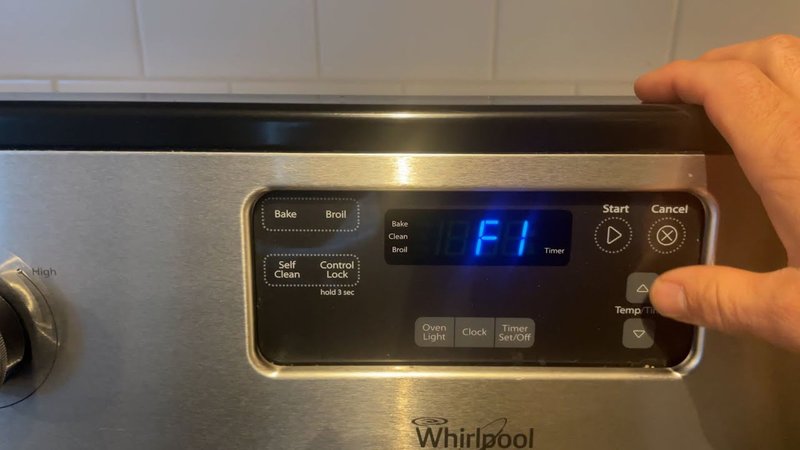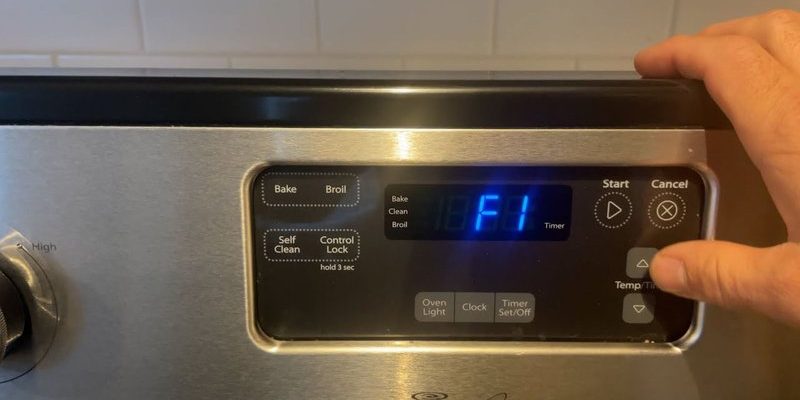
So, what exactly is an E1 error code? In simple terms, it’s your microwave’s way of waving a little red flag. It’s saying, “Hey, something isn’t quite right here!” Just like a car’s check engine light, it’s a warning that some part of the system isn’t functioning as it should. But unlike a car, most of us don’t have a mechanic on speed dial for our microwaves. Let’s sort out what this means and what steps you should consider next.
What Does the Whirlpool E1 Error Code Mean?
The first thing you need to know is that error codes are messages from your appliance, and each code pinpoints a specific issue. For the Whirlpool microwave, an E1 error code often points to a problem with the microwave’s temperature sensor. Think of this sensor as the microwave’s thermometer. It checks how hot things are getting inside and adjusts the power accordingly to ensure your food is heated just right. If this sensor isn’t communicating properly with the system, the microwave raises the E1 code to alert you.
Why does this happen? Well, the reasons can vary. Sometimes, it’s due to a loose connection—perhaps something has jiggled out of place from regular use. Other times, the sensor itself might be faulty or has just decided to retire from its job. It’s not uncommon for small electronic components to have a hiccup now and then. Just like when your phone acts up and needs a restart, your microwave might be having a similar digital dilemma.
At this point, you might be asking yourself, “Is it safe to keep using the microwave?” It all boils down to the specific issue triggering the E1 code. If it’s a minor glitch, using the microwave briefly while you sort things out might not be a major risk. However, caution is advised. The sensor plays a vital role in ensuring your food heats evenly and safely. If it isn’t working correctly, there could be a risk of overheating, which might pose a fire hazard or cause the appliance to fail. As a rule of thumb, it’s always best to err on the side of caution and consult with a professional technician if you’re unsure.
Steps to Take When You See an E1 Error Code
Now that we’ve cracked the code on what the E1 error means, let’s dive into what you can do about it. First things first: safety. Make sure the microwave is unplugged before you start poking around. Safety is paramount because, even when turned off, appliances can sometimes hold a residual charge.
If you feel comfortable, you can check some basic things. Start by inspecting the plug and the outlet to ensure everything is connected securely. Sometimes, the simplest explanations—like a slightly unplugged cord—can solve the problem. If the basics are covered, you can consider looking at the microwave’s interior. Carefully open it up to see if anything looks amiss, like loose wires at the sensor. But be careful! If you’re not experienced with electronics, it’s often best to leave this to a professional.
Should the issue persist, it might be worth calling in the experts. A licensed technician can safely delve into the appliance’s internals and diagnose if a part needs replacing. They can determine whether the sensor or another component is the culprit. It’s a bit like calling a doctor when over-the-counter remedies aren’t cutting it for a stubborn headache. Professionals have the tools and expertise to address the root of the problem and ensure everything is back in working order.
Preventing Future Error Codes
After resolving the current error code, you’d probably like to avoid running into this issue again. Just like maintaining a car or regular dentist visits, a little upkeep can go a long way with your appliances. Regularly cleaning your microwave and ensuring that it’s not overworked by overstuffing it with food can help prevent wear and tear.
It’s a good idea to use microwave-safe containers and avoid metals, which can trigger internal issues. Also, be mindful of running the microwave empty, as it can cause overheating—akin to revving an engine without any oil. If your microwave tends to be a little temperamental, consider having it serviced annually. This kind of periodic check-up can catch potential issues early, saving you time and stress later on.
By keeping these tips in mind, you ensure not only the longevity of your microwave but also the safety of your kitchen. If your microwave ever shows another error message, you’ll be better prepared to tackle it head-on or know when to seek help. Ensuring your appliances are in good health is key to a smoothly running home, and with these strategies, you’ll be cooking up meals in no time without a hitch!
